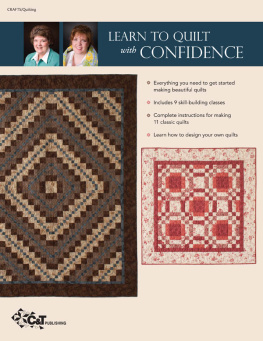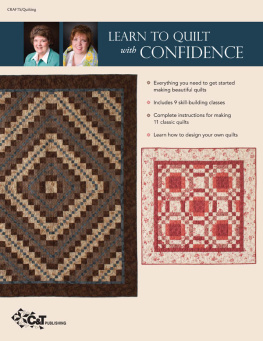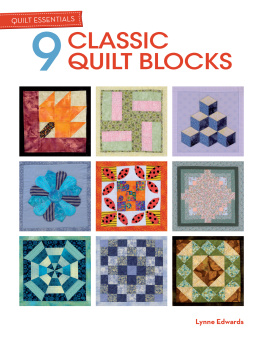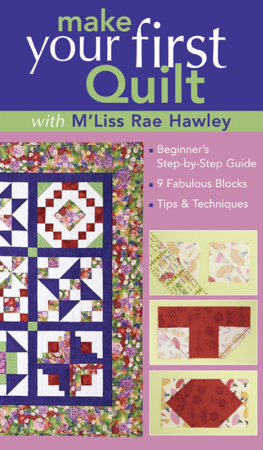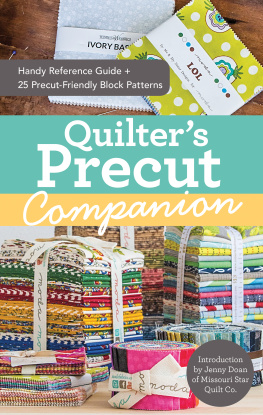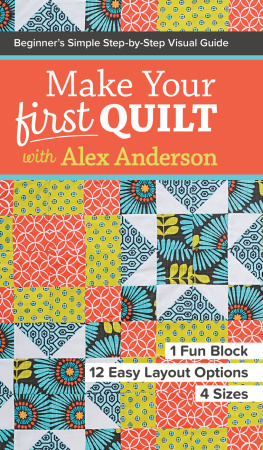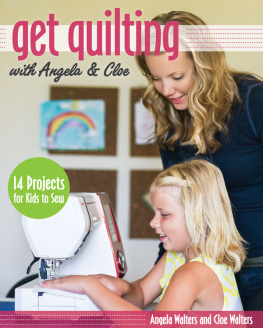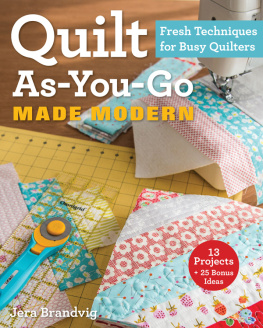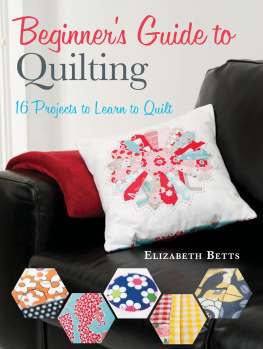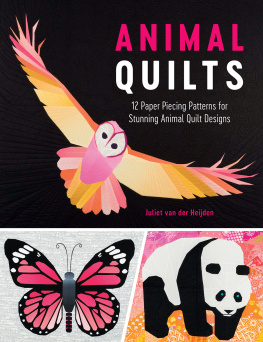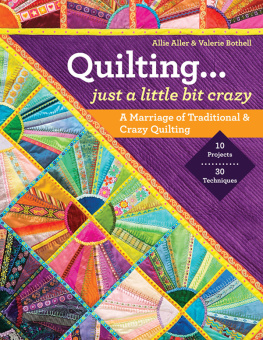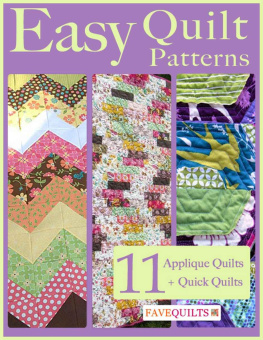
Publisher: Amy Barrett-Daffin
Creative Director: Gailen Runge
Acquisitions Editor: Roxane Cerda
Managing Editor: Liz Aneloski
Editorial Compilers: Roxane Cerda
Cover/Book Designer: April Mostek
Production Coordinator: Zinnia Heinzmann
Production Editor: Alice Mace Nakanishi
Production Assistant: Lauren Herberg
Illustrators: Wendy Mathson, Kirstie L. Pettersen, and Aliza Shalit
Photography by Brian Birlauf, unless otherwise noted
Published by C&T Publishing, Inc., P.O. Box 1456, Lafayette, CA 94549
Borders
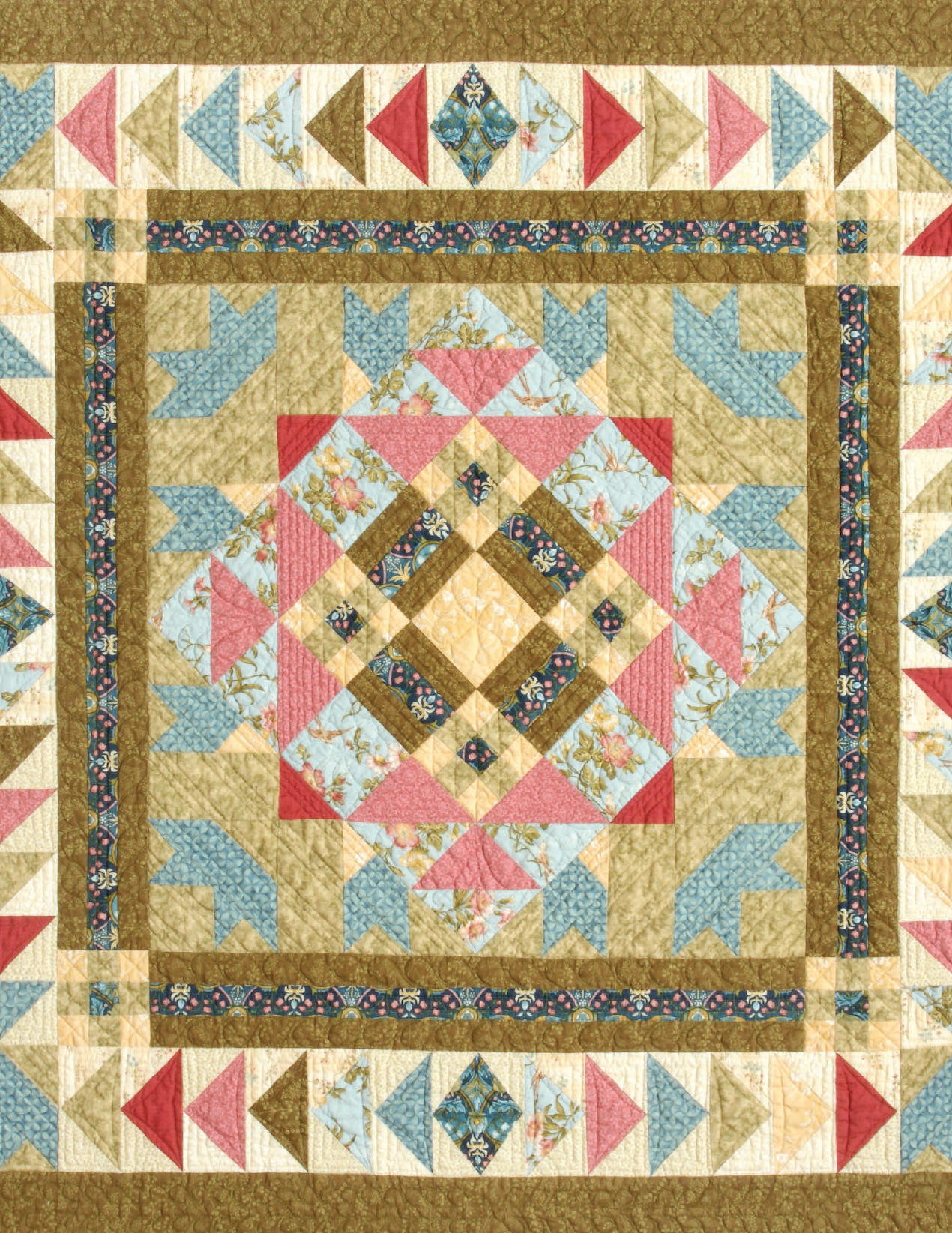

INTRODUCTION

Goose in the Pond, featuring many borders
Photo by C&T Publishing
Adding borders to your quilt top is a wonderful way to frame the design developed by the piecing. The border is a place where you can stop the repeat piecing design and give your eye a place to stop or rest.
A single border is often enough for a simple quilt pattern. A combination of two or more plain strips around the outside edge of the piecing can be more exciting, and adding corner blocks can add another design element.
A border can draw the eye inward and reinforce the design of the overall quilt top, or it can be so busy that it competes with the interior design of the quilt top. There are a couple of approaches to finding out what will work best. One is to totally plan the quilt on paper, including the borders, to see if the scale and the complexity of the border enhance or detract from the quilt top. The design, width, and number of fabrics are determined before cutting and sewing.
If the quilt top is finished, you can audition simple borders at the design wall. You can get a real feeling for the effects of the color, pattern, and placement of different fabrics on the overall look of the quilt. You may find that what looks good on paper does not always play out the same in the actual fabrics.
Determining the width of simple strip borderseither single or multipleis easier when the quilt top is finished. As you audition different fabrics, you will see how their color and value play a part in how wide they need to be cut. It is hard to predetermine width until the border is next to the edge to which it will be added. You will also find that the fabrics used in the quilt top are not the only choices. Adding a totally new fabric can really pull a design together and add spark.
Choosing Fabrics for Borders
Borders act as frames around your entire quilt top. These fabrics need to enhance your quilt, not detract from it.
Think about the following ideas when planning your borders:
Because of their position and purpose, the color of the border fabrics can influence the color scheme of the entire quilt. The color used for the border can be the same color as found in the blocks, or it can introduce a whole new color that enhances the quilts overall effect. Repeating a predominant color combined with adding one or two new colors can give striking results. Fabrics such as solids and stripes are especially interesting in borders.
Using a large-scale print that contains the colors of the fabrics in the quilt top can have a dramatic effect and can pull all the colors together, unifying the quilt top, borders, and/or sashings.
Border stripes create a coordinated look to the overall quilt. With mitered corners, the border becomes an elaborate frame, but with very little effort.
Consider how you want to quilt the borders. Remember that a busy printed fabric can be your friend by hiding stitching issues, but it will not let the quilting design show. A solid or small-print fabric allows the quilting to be a focal point, but it will not do much to hide any quilting issues you may still be working out. With practice comes excellence, and you may find that challenging yourself to quilt a solid border is a good way to leapfrog your abilities forward.
Tip 
It is often easier to select border fabrics once all the blocks are made. Take the blocks to your quilt shop and audition them with a variety of fabrics. Stand back and study the effect that different colors and different fabrics can give. You will start to see that the fabric you choose to work with can and will affect the width of each border. For fun, ask a total stranger for an opinion. But remember, this is your quilt, and you will make the final decision. If you like what you have picked, go with that; you will be happier and will have a happy quilting experience that way!

CHECKING THE QUILT TOP FOR SQUARENESS
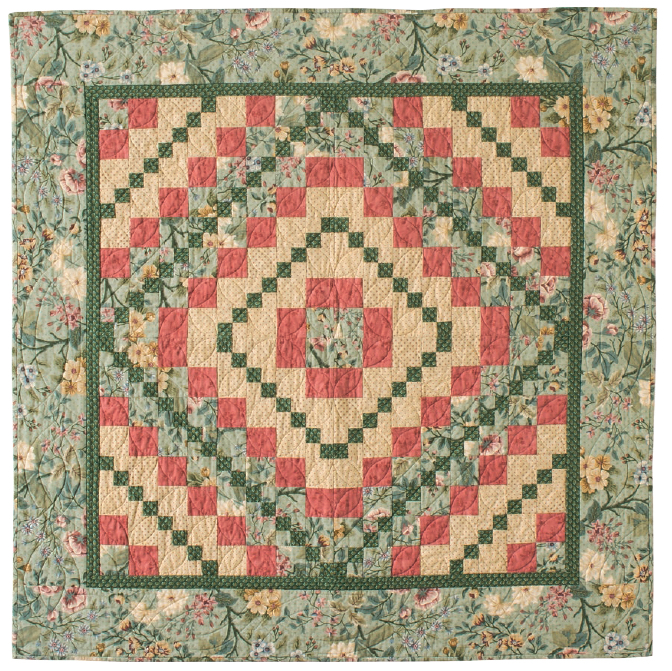
Town Square
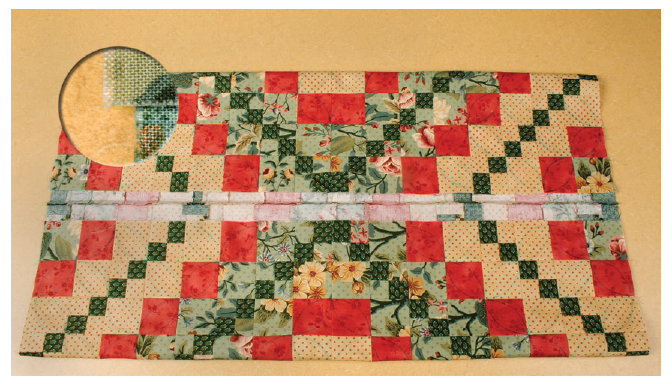
Folding quilt top to center
Once your quilt top is completed and well pressed, you need to check that it is square. Are the two sides the same length, and are the top and bottom the same width? Then youll need to measure the entire quilt top to determine the length needed for the borders. The first step is to fold the quilt top in half to determine whether the top and bottom edges are the same width as the center, and the two sides are the same length. To do this, fold one end of the quilt top over to the center as shown. Are the top edge and center the same width? Repeat with the other end. Do the same with the sides, one side at a time. Are they the same length?
Correcting for Deviations
As you pieced your quilt top, you should have squared up each unit as you went along. This process really helps develop a quilt top that is very accurate. If everything is perfectly even, youre ready to measure and cut the border strips. But what if things dont come out even? Perhaps one side is longer than the other, or one end is shorter than the other. Now is the time to make corrections.
Harriet does this by examining the piecing of the seams where the rows are joined. It is a common problem for the fabric to pivot slightly as youre nearing the end of any seam, especially if you are using a zigzag throat plate. If this is happening, then its possible that a slightly larger or smaller seam was taken at the edge, making that side of the quilt shorter (or longer) or narrower (or wider) than the opposite side, where the seam started. Just one or two threads width difference per seam can throw off the measurements dramatically. If this is the case, restitch, being careful to keep the needle just beside the previous stitching. If the seams need to be smaller, release the stitches back from the edge about 3 to 4, and restitch, being careful to not stitch in the same holes a second time.
Hint
Next page

